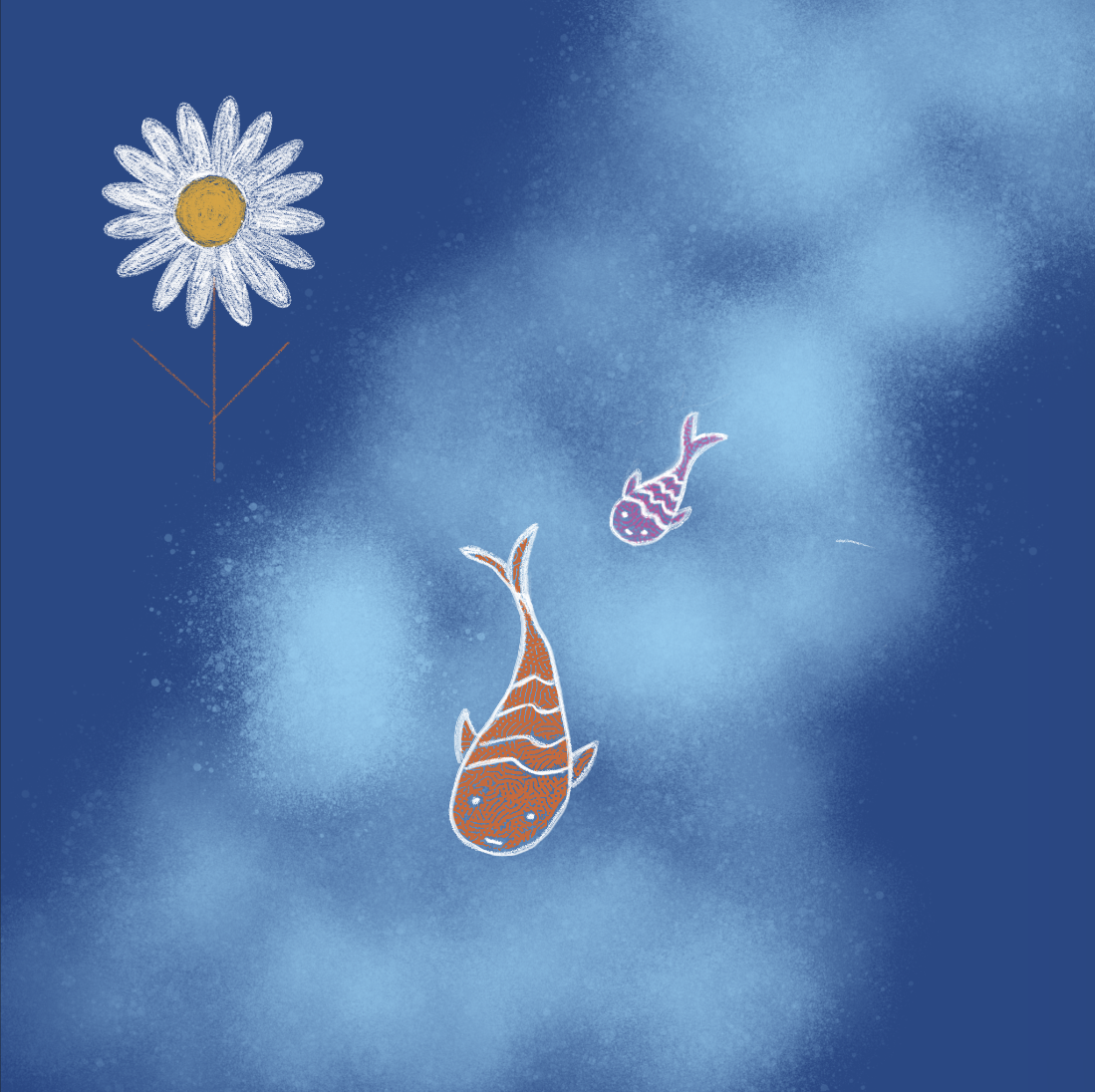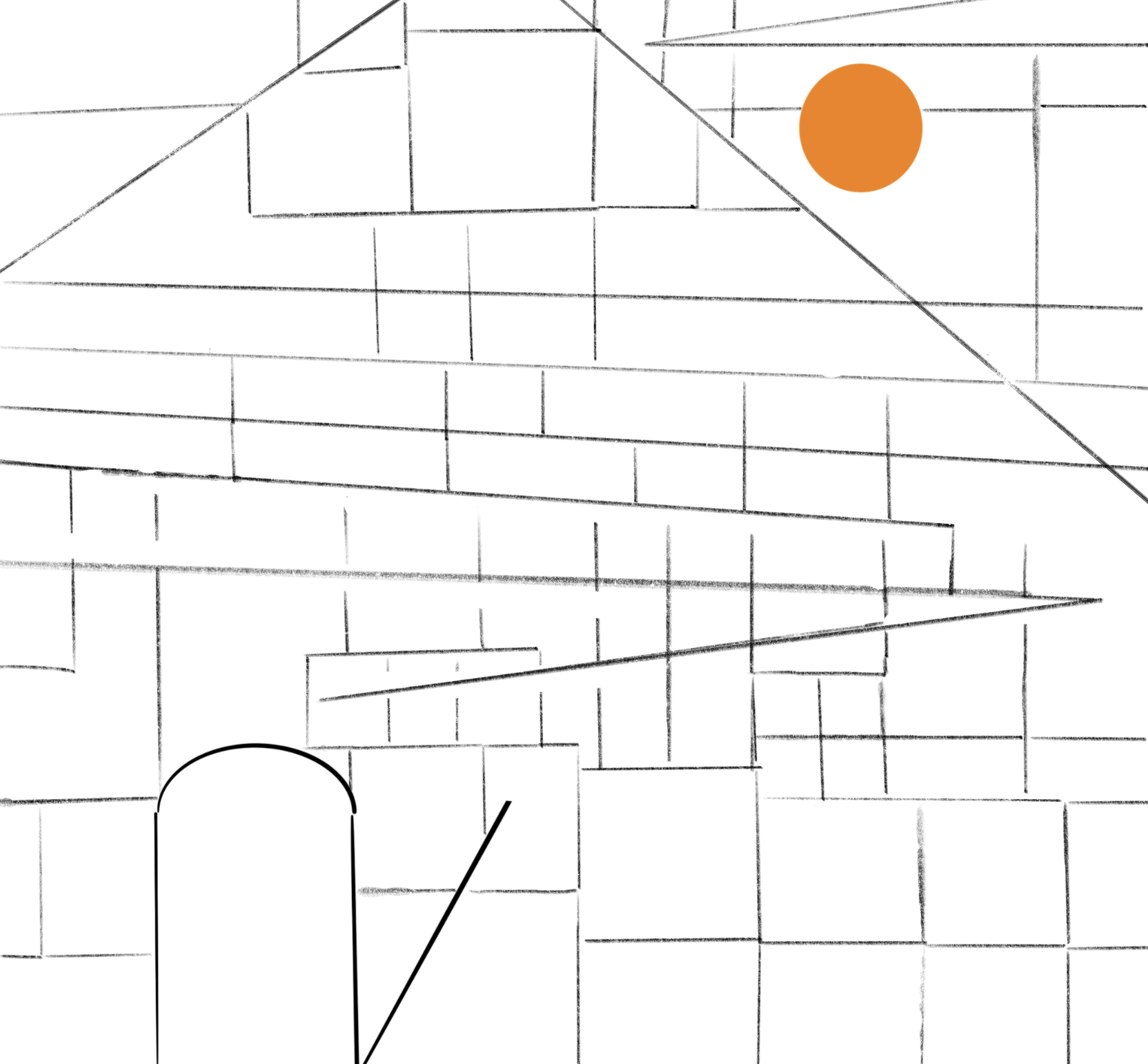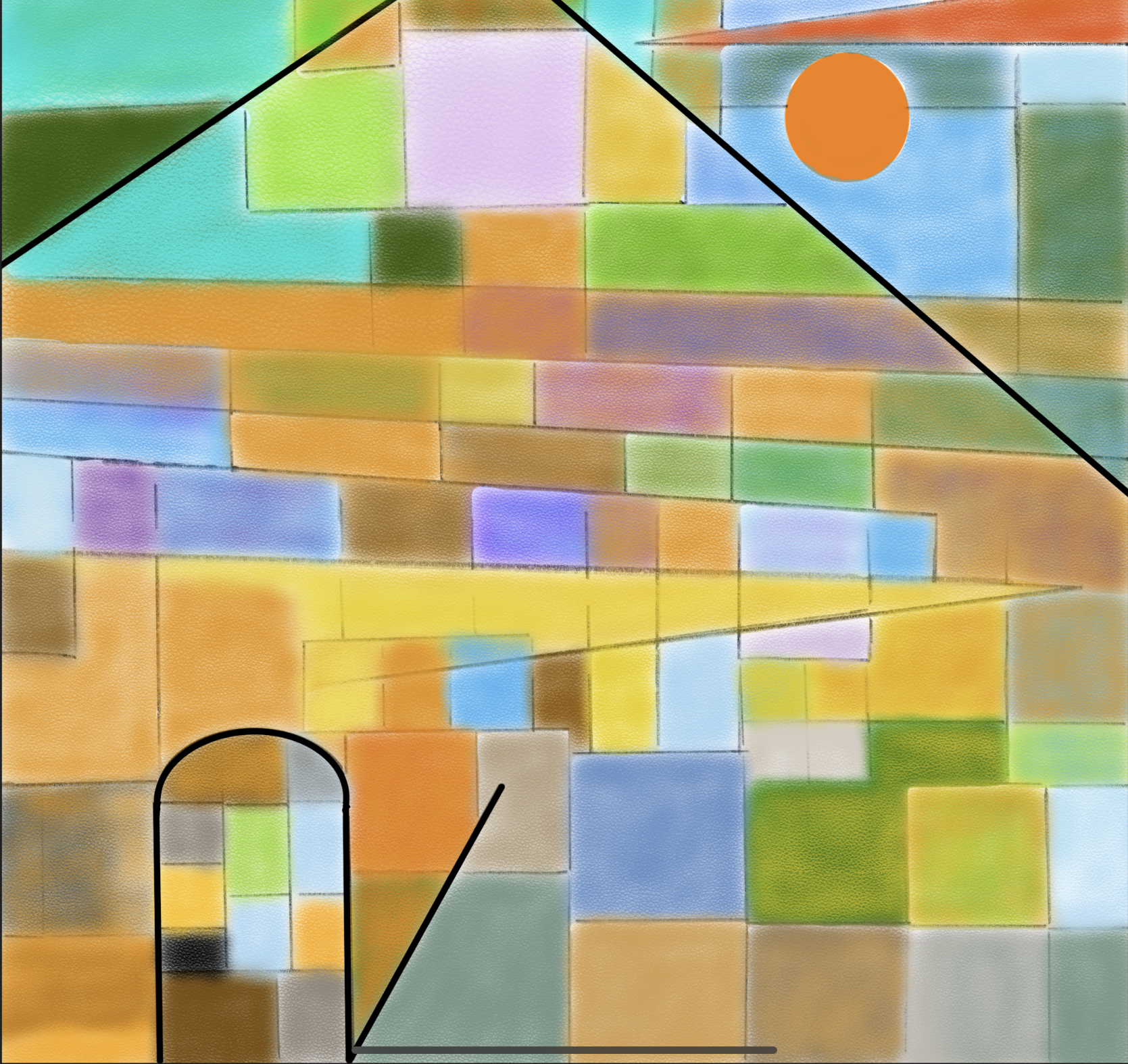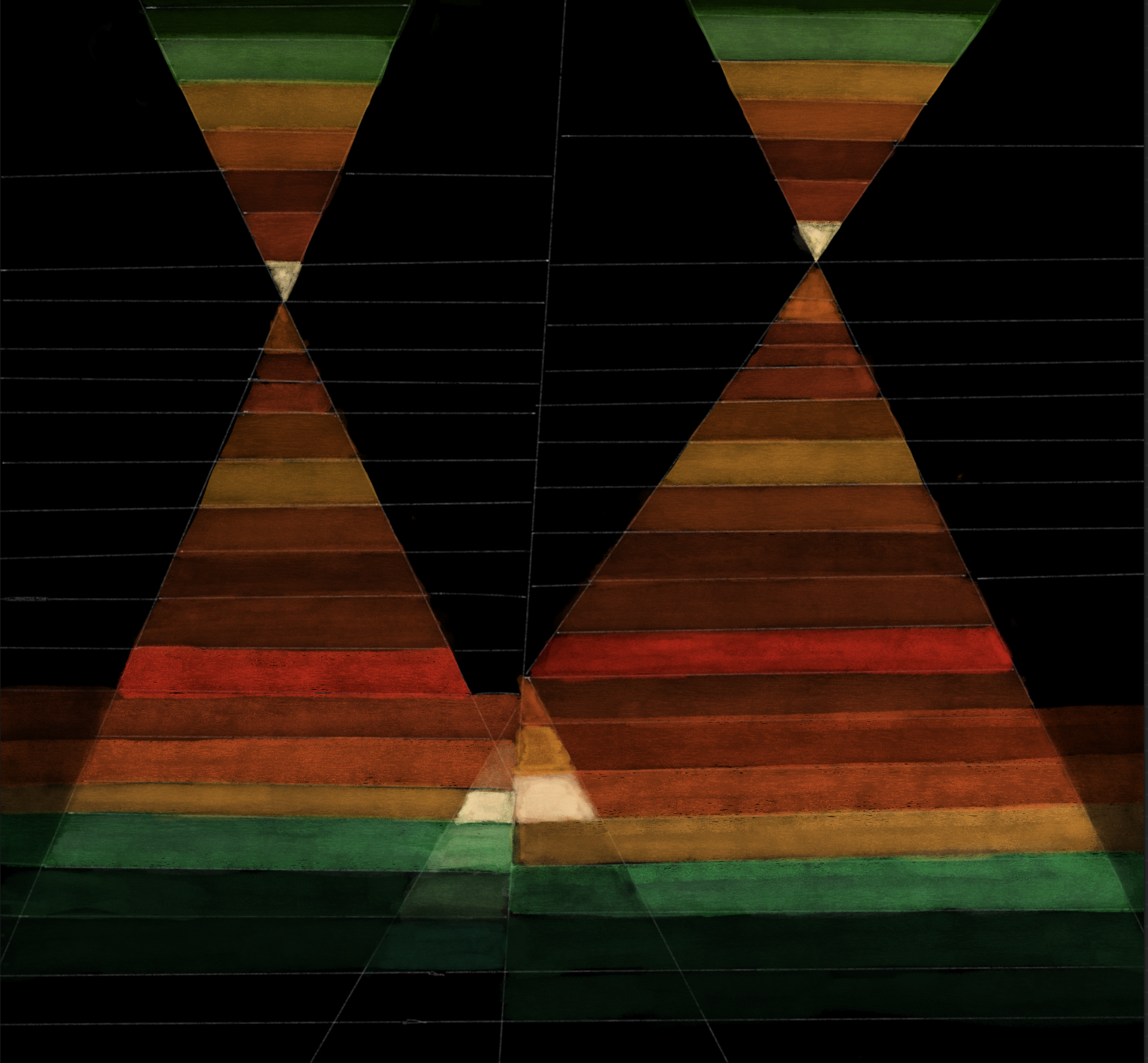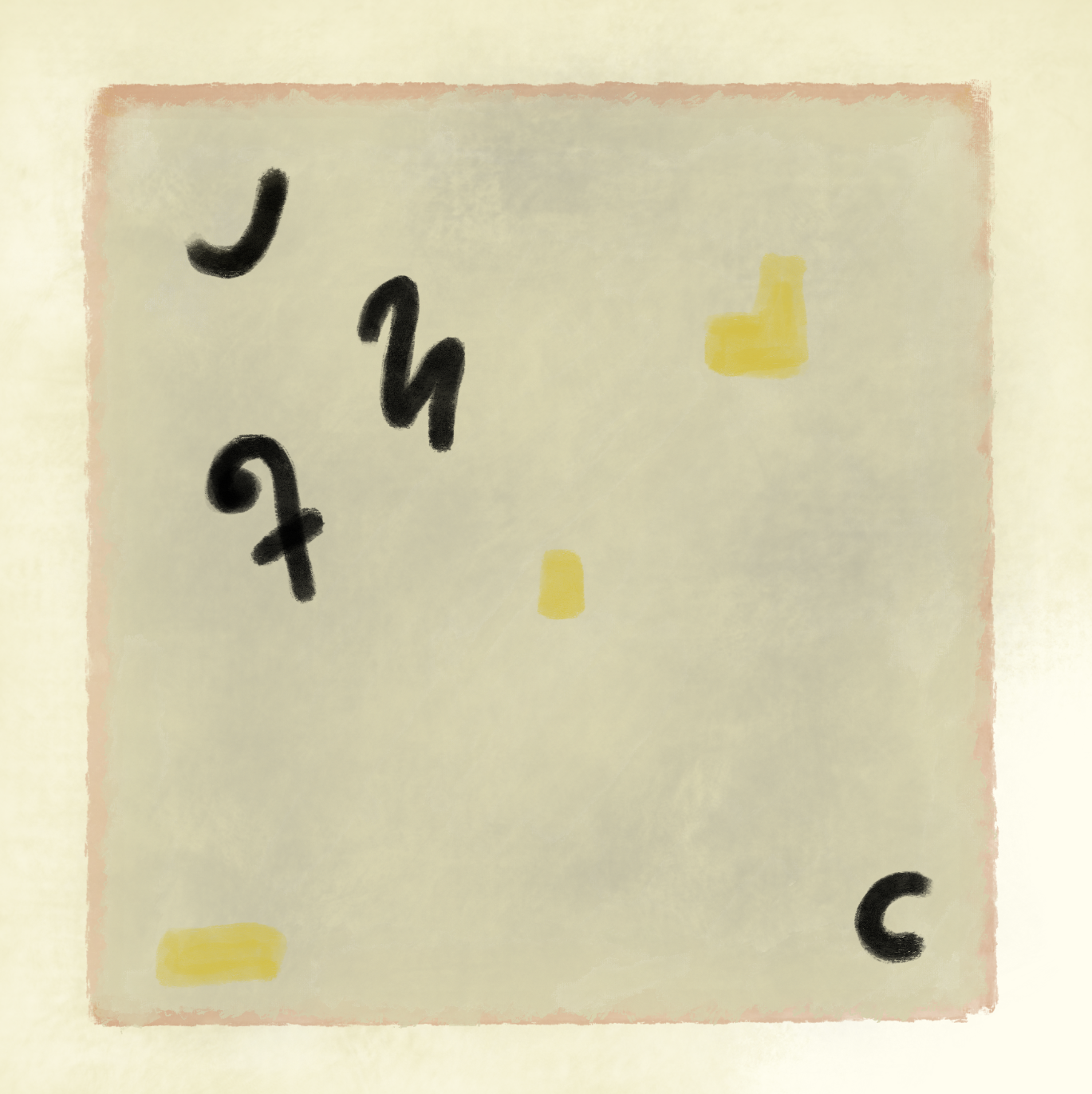PAUL KLEE BOOKLET
Digital Artwork
RMIT University Project
October 2020
The focus of this project was on producing a booklet that represented the style of an artist's work. I decided to use a 4-panel accordion fold as the structure of my booklet which comprises images/paintings/drawings inspired by Paul Klee.
The initial stage of my design put attention on the choice of his artworks and analysed their style, geometric forms, and colour which assisted me in developing the layout of my booklet. The front cover includes the name of the artist, while the other pages show some images originally created along with placeholders for the text to be included in the final layout.


In an attempt to mimic Klee’s multidimensional approach to his work, I used a variety of media (pastel colours, oil paints, watercolour, spray paint, etc).
To give the text a sense of depth, I included the 'cut-out' technique in my design, achieved by adding a shadow to the white background created for the content of the booklet.
The artworks I chose for my design layout include:
Gesetz (Law), painted in 1938, forms part of the immense body of work created by Klee during the final years of his life. The artist draws inspiration from a variety of writing systems, including the Latin alphabet, the Egyptian hieroglyphs, and the cuneiform writing. His attempt to echo familiar signs while allowing room for his own imagination and creativity inspired me to experiment with the use of typography.
Ad Parnassum (1932) is considered to be Klee's masterpiece and the best example of his pointillist style, which is also one of his most finely worked paintings. Analysis and deconstruction led me to a personal reinterpretation of this painting, and to the use of grids in the creation of some of my images.
Cat staring at the moon. An interesting work of art, with mystical elements - moon, flora, and cat - recurring in Klee's imaginative art, which has been revisited with the use of typography shaped into a circle with 'wavy' words floating inside it. This was achieved by creating paths with the pen tool in Adobe Illustrator.
Fish magic, a 1925 Surrealist painting. I tried to mimic the mysterious and magical atmosphere of the painting by adding some of the same elements to my digital drawing, including fish, flora, and the moon.
Doppelzelt (Double tent), 1923. An intricate yet simple work of art, where colour and geometry predominate in this double tent shape. Words follow imaginary paths within the image.
Senecio. The use of lines, shapes, and space in this 1922 Cubist painting demonstrates the principles of Klee's artistry based on simple graphical elements set in motion by energy from the artist's mind. White space in the shape of a halo was created around the subject in the painting and used as a placeholder for the text.




